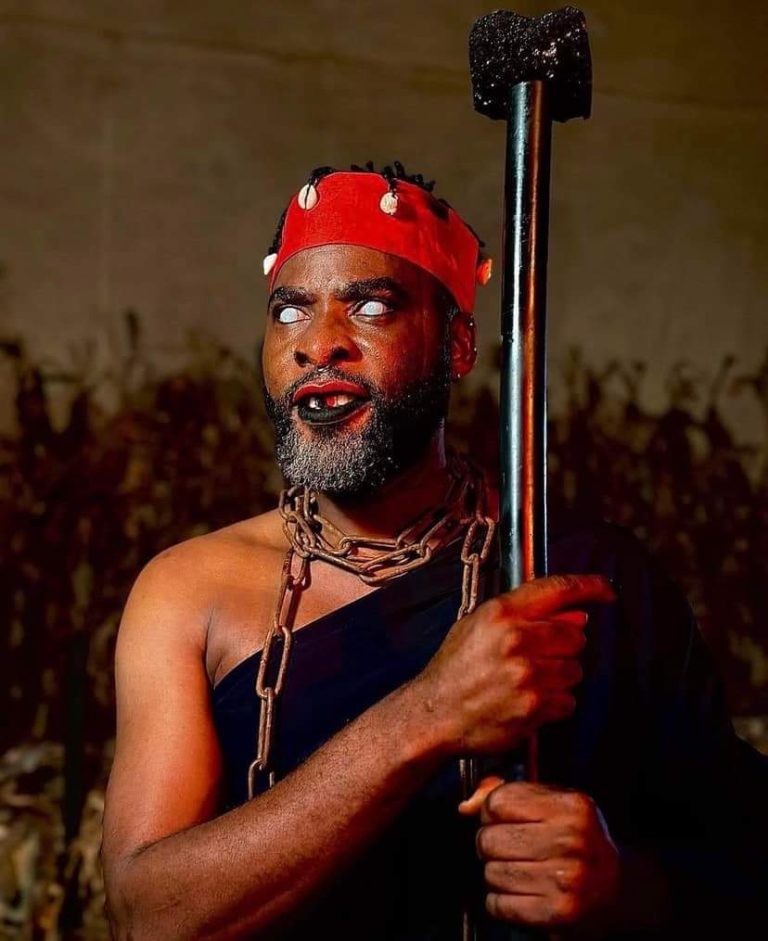Experience the Thrill: A Review of Ibrahim Chatta’s ‘Osoronga’
Nollywood is no stranger to stories that blend tradition with contemporary narratives, but very few manage to do so with as much grace and depth as OSORONGA, the latest offering from acclaimed filmmaker and actor Ibrahim Chatta. In this compelling Yoruba-language film, Chatta not only acts but also directs and produces, creating a spiritually rich and visually immersive experience that pays homage to his roots and uplifts indigenous storytelling.
Plot and Themes
At its core, OSORONGA is a spiritual odyssey. The story revolves around a troubled young man whose life is plagued by misfortune and personal tragedies. Desperate for answers and redemption, he embarks on a journey back to his ancestral village, where he is confronted by supernatural forces, buried secrets, and the wisdom of ancient traditions. The narrative elegantly blends elements of mysticism with existential themes of identity, fate, and legacy.
What sets the film apart is its philosophical undercurrent. It isn’t merely a tale of supernatural intrigue—it is a meditation on the self and one’s place within a larger cosmological order. Through the lens of Yoruba spirituality, OSORONGA raises questions about destiny, intergenerational curses, and the importance of reconciling with one’s heritage.
Performance and Characterization
Ibrahim Chatta delivers one of his most powerful performances to date. As the protagonist, he seamlessly embodies the turmoil, confusion, and eventual enlightenment of a man torn between modernity and tradition. His emotional range is astounding—moving from stoic pain to spiritual ecstasy in a way that feels organic and lived-in.
The supporting cast is equally impressive. The inclusion of seasoned Yoruba actors and actresses adds to the film’s credibility. Their performances are grounded in cultural authenticity, with dialogue steeped in idiomatic Yoruba, delivered with the cadence and gravitas of traditional orature.
Chatta’s background as a stage actor is evident in the intensity of his performance. He doesn’t just act—he inhabits the role. His character’s transformation is both spiritual and physical, and he conveys this with subtle changes in tone, posture, and expression.
Cinematography and Setting
One of OSORONGA’s most breathtaking qualities is its cinematography. The film is shot on location at Ibrahim Chatta’s personally funded 74-acre film village in Oyo State—a massive project that cost over ₦1.4 billion and took four years to complete. (Source)
This film village was designed to reflect traditional Yoruba architecture, and it serves as the perfect backdrop for the mystical world of OSORONGA. With its earthen huts, sacred groves, shrines, and sweeping savannahs, the location doesn’t just enhance the narrative—it becomes a character in its own right.
The director of photography deserves credit for using natural light and composition to emphasize the film’s spiritual themes. Whether it’s a sunbeam piercing through the mist in a forest or the flickering of fire during a ritual, each frame is meticulously crafted. The visuals are more than aesthetic—they are symbolic, often echoing the protagonist’s internal struggles.
Cultural and Spiritual Context
To fully appreciate OSORONGA, one must understand its cultural subtext. Yoruba cosmology is rich with deities (Orisha), ancestral worship, and spiritual rites. This film does not shy away from these elements—instead, it embraces them unapologetically.
The rituals depicted in OSORONGA are not Hollywood-style voodoo caricatures. They are intimate, sacred, and performed with respect. Chatta ensures that these practices are contextualized within the broader spiritual framework of Yoruba culture. This is not just entertainment; it is cultural preservation.
This dedication to authenticity recently earned Chatta a special recognition from the Ooni of Ife, a spiritual and traditional leader in Yorubaland, who commended him for his commitment to cultural heritage and storytelling. (Source)
Soundtrack and Audio Design
The film’s soundtrack is another standout element. Rooted in traditional Yoruba music, the score uses indigenous instruments like the bata drum, talking drum, and flute to create an ethereal soundscape. Chants, incantations, and folk songs are woven throughout the film, adding emotional depth and cultural resonance.
Audio design is crisp, particularly during moments of tension or revelation. The use of silence is strategic and effective—allowing the viewer to fully absorb moments of spiritual or emotional intensity.
Message and Impact
More than a movie, OSORONGA is a statement. It is a response to the erasure of indigenous knowledge and the commodification of African spirituality in mainstream media. Chatta’s film reclaims these narratives, treating them with reverence and depth.
The film encourages African audiences, especially the youth, to re-engage with their heritage, to question the stories they’ve been told, and to find pride in their roots. In a globalized world where western ideals often dominate, OSORONGA is a bold assertion of identity and spiritual sovereignty.
Challenges and Triumphs
Producing a film like OSORONGA wasn’t without its challenges. According to Chatta, funding was entirely personal, and the magnitude of building a culturally accurate film village delayed the production by four years. Yet, these hurdles did not deter him. In fact, they seem to have galvanized his vision.
That kind of dedication is rare in Nollywood, where quick production cycles and commercial formulas often take precedence over craft and authenticity. Chatta’s passion project is a reminder of what’s possible when vision meets persistence.
Final Verdict
Rating: ★★★★★ (5/5)
OSORONGA is a cinematic triumph—visually stunning, emotionally gripping, and culturally vital. It’s a film that does more than entertain—it educates, uplifts, and honors tradition. Ibrahim Chatta proves that Nollywood can rival global cinema not just in scale, but in storytelling depth and cultural richness.




